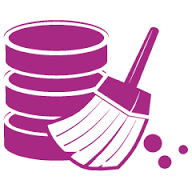Data decay is a costly problem
that no business can escape; the cost of fixing broken databases increases as
the data becomes more decayed. Additionally, the cost increases if the record
is left unchecked. Around 20 to 30 % of business data decays every year, which
means most business data will unavoidably suffer without robust data quality
initiatives.
When tackling data decay, there
are two key processes that will heal the dataset and ensure that we make better
quality decisions. The first step is to cleanse the data. The second is to
enhance it to verify its authenticity.
How Data Cleansing Works?
Data cleansing is one of the
methods that can be used to heal a database.
Using cleansing techniques, the
database is scanned for imperfections and then corrected using a combination of
manual and automated processes.
Data cleansing can be used to
strip duplicate records from a database; obvious matches are easy to find, and
sophisticated data quality software can locate matches that may initially go
undetected. Data quality software also presents sections of the database for
manual review, ensuring that the data cleansing operation does not accidentally
remove false positives.
Since data is continually
decaying, data cleansing must be carried out frequently. If the data is also
checked when it is added to the database, a large number of dirty data problems
can be remedied before the client becomes aware of any mistakes. As a result,
the entire business functions more efficiently and builds its decision making
on quality information that is timely, relevant and accurate.
If the business can continually
make efforts to cleanse its database, it is far less likely to run into
problems such as customer complaints, returned marketing communications and
even legal claims. Additionally, once the data is clean, the business can then
move forward to enhancing it to make it even more useful and relevant.
How Data Enhancement Works?
Data enhancement is an additional
process that improves clean data by scanning and supplementing. By drawing on
alternative sources of information, your database can be scanned for potential
additions and extended to incorporate new fields.
This allows you to combine your
records with information you may not have known you needed when the database
was first created, and it allows you to verify information beyond simple names,
addresses and postcodes.
During data enhancement, existing
clean data is augmented with up-to-date information from third party providers.
This gives the data quality project a source of external intelligence, and it
allows the information to be enriched with data that is in the public domain.
Once a record has been enhanced, it is effectively supplemented with data from
dozens of other databases, all of which have been well maintained by their
originator.
The Enhancement Challenges:
Enhancement presents a challenge
for data quality operatives. In the past, enhancement could only be carried out
in a separate system, and this usually meant that the business’ cleansed data
had to be exported and then re-imported once it had been enhanced.
Whenever data leaves its source
system, there are myriad opportunities for corruption. Subtle inaccuracies,
formatting errors and inconsistencies can be introduced; the systems may encode
data in different ways or interpret values differently. This can cause problems
with formatting (for example, in date fields), and with special characters.
The last thing we want is
pristine, clean data to be corrupted during the enhancement operation. As such,
it is best to keep the data in the system, without export and import
operations, if at all possible. This is made possible using web services and
APIs that communicate directly without any manual intervention.
Thanks to modern integration
techniques, it’s possible to link up our systems in real time without the data
ever needing to be exported, imported or manually edited. This drastically
reduces the chance that errors will be introduced.
The Perfect Partnership:
Clean data ensures that all
customers become viable lifetime prospects. With the right care and management,
dirty databases can become functional, accurate datasets that boost performance
across the enterprise. Data enhancement is a logical next step in all data
quality initiatives, and is yet another tool businesses use to ensure their
data is fit for purpose.
Source: www.dqglobal.com

